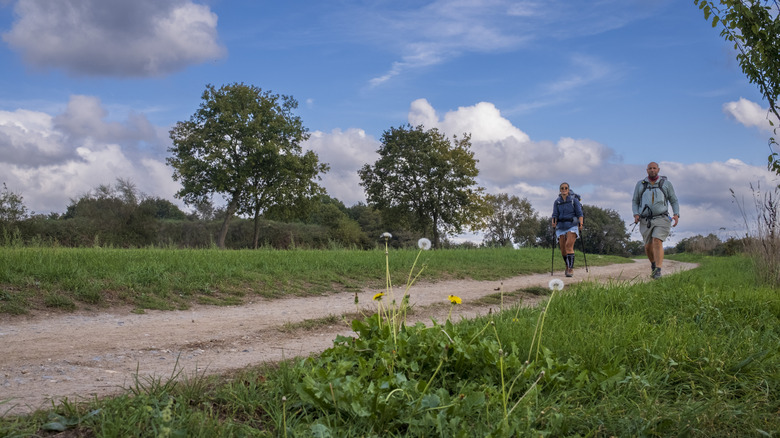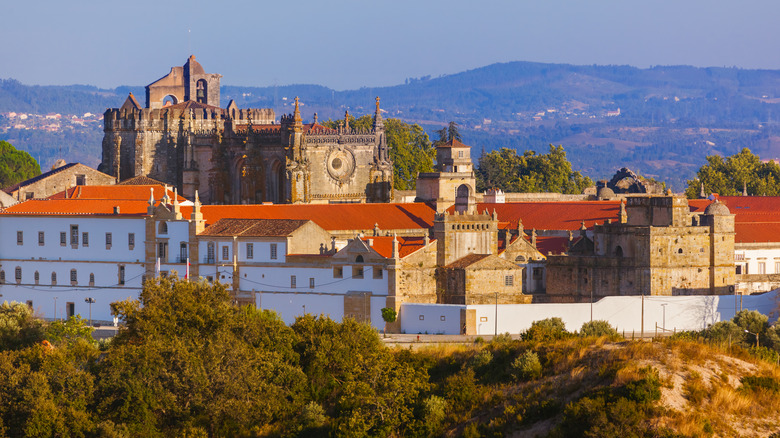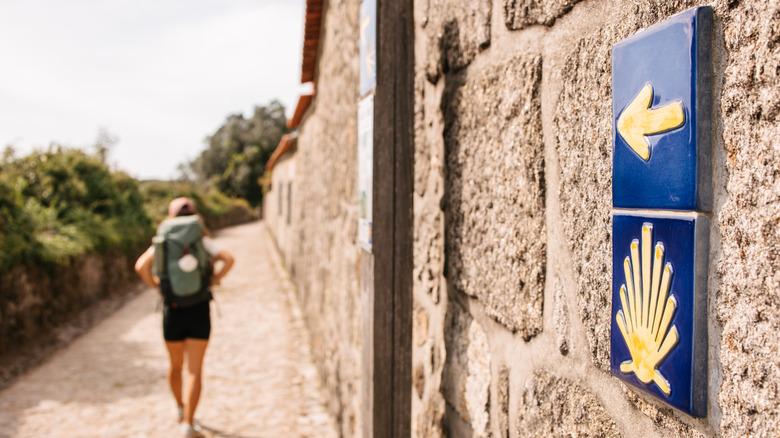Portugal's Camino Santiago Is A Scenic, Less-Crowded Version Of The Famous Hike Through France And Spain
It is thought that pilgrims have been walking along Northern Spain's coast in search of Saint James' tomb to the city of Santiago de Compostela since the ninth century. This thousand-year-old tradition sees people pouring into Spain's northwestern region of Galicia on foot towards the iconic cathedral along the Camino de Santiago. While most hikers choose to start their journey in France, about 34% of the pilgrims who arrived in Santiago de Compostela in 2024 took the Portuguese Way (Caminho Português) to complete Europe's equivalent to the Appalachian Trail, according to data from the Pilgrim's Reception Office. As a calmer, more meditative experience than the popular French Way, the Portuguese Way offers picturesque pathways, quieter roads, and less competition for beds in albergues (hostels where the majority of pilgrims tend to spend the night).
The Portuguese route's lack of popularity is arguably its charm. Budding walkers typically fly into Porto, as it is the nearest Portuguese city with a major international airport, though ambitious walkers can fly into Lisbon or even Faro in the south. There are a few main routes of the Camino de Santiago that start in Portugal, offering something to meet every type of pilgrim's needs. Traversing the ancient Roman roads on the Portuguese Way gifts pilgrims with stunning moments in awe of everything from azulejo-tiled churches to the sun setting over the Atlantic on a quiet coastal stretch.
Choose your adventure with a route tailored to your needs
Chosen by over 19% of walkers in 2024, the most popular choice starting from Portugal is the Central Route. While you can simply take this route from Porto to Santiago de Compostela, you can also embark on an over 390-mile-long journey along the inland trail from Lisbon. The latter winds past many important places, including UNESCO World Heritage Sites such as Coimbra University and the Knights Templar castle in Tomar. For pilgrims looking to disconnect from their smartphones as part of their spiritual journey and not to be checking in on their GPS, the Central Route offers clearer signage and better infrastructure than some of the other routes available in Portugal. The familiar stone markers adorned with scallop shells are regularly found along the way.
Despite its name, the 175-mile-long Coastal Route only hugs the Atlantic for less than a third of its length; nonetheless, about 15% of hikers choose this path. Ocean-obsessives hoping to stay close to the waves might prefer the Litoral Way, which is similar to the Coastal Route, but the majority of the path touches the coast. It's also easier on the feet, with fewer cobblestones, making it an appealing choice for those prone to blisters. For those wanting to cover more ground in less time, cycling versions of the Camino are available, starting from Viana do Castelo, less than 50 miles north of Porto. Those doing the Coastal or Central routes will both pass through Redondela after crossing the Spanish border, and in the nearby Pontevedra, the "Spiritual Variant" becomes available — a 50-mile detour that even includes a boat journey.
Practical tips to enhance the Portuguese Camino experience
Though the Camino is available to pilgrims all year-round, be sure to consider the pros and cons of different routes based on the weather. The Central Route offers more shade and shelter, which can be helpful, especially during prolonged periods of rain, particularly common in the north and central regions during the winter. Those with real flexibility about when to visit Portugal for the Camino might wish to follow the advice of travel expert Rick Steves about the best time to head to Portugal and avoid July through August (although these are popular hiking months). Other considerations to make include how long the Camino will actually take. Those starting from Porto can complete it in about 14 days, but the routes from there vary. There are certainly many ways that a phenomenal city like Porto can be enjoyed on a budget before setting off on the Camino.
It should also be noted that pilgrims looking for a bit more luxury than what the albergues can provide have alternative options. The Portuguese Way has restored manor houses into charming lodgings along the route. Though far less busy than the routes in from France, you are still sure to pass other pilgrims along the way. To ensure the Camino's welcoming spirit is felt, make sure to learn the phrase "Bom Caminho!" to wish other pilgrims a good journey.


